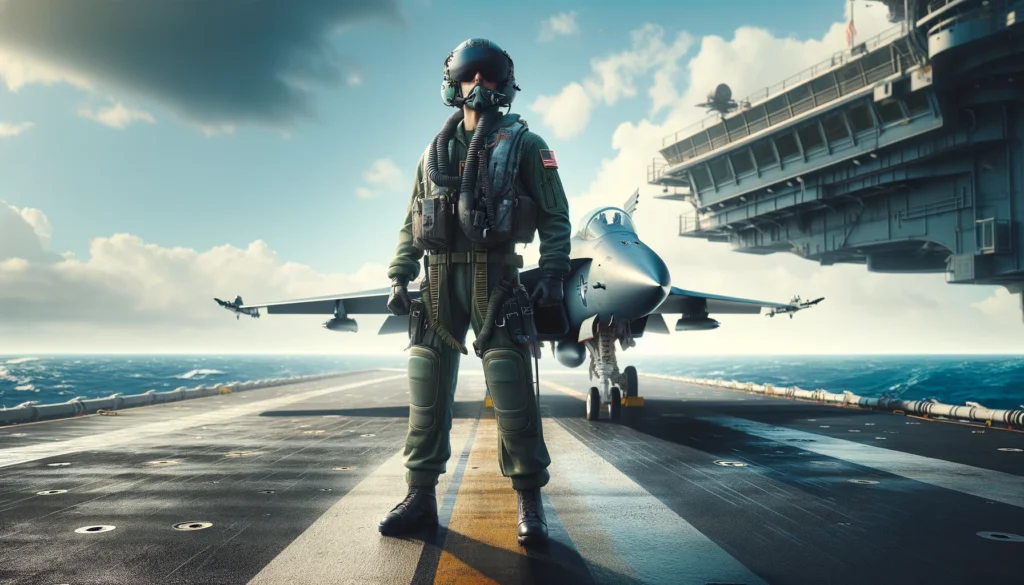Becoming a Navy pilot is a superior ambition, marked by a demanding selection process and a rewarding career path for those committed to becoming a Navy pilot. Your pathway to the skies in a Naval aircraft – whether as a pilot in a jet, helicopter, or any other aircraft – requires dedication, precision, and a willingness to serve the USA Navy Air Force. Furthermore, This guide navigates through the skies of your aviation dreams to become a Navy pilot, plotting the course from civilian life to the enlisted position of earning the “Wings of Gold” title in the U.S. Navy.
Starting With Understanding Your Path:
For those considering ‘how to become a navy pilot’, you stand at the entry point of an honorable and challenging journey. So first, take a deep look at your passion; if you think that you dare to push your boundaries to the end, then you can take this path.
Becoming a Navy pilot is not an easy task; it’s full of responsibilities & duties that you have to give to your nation.
Moreover, The aspiration to pilot cutting-edge aircraft and skillfully manage the U.S. military territories is a personal achievement and a profound commitment to safeguarding national security.
Furthermore, before starting your journey as a Navel Pilot, prepare to face all the steps and hurdles that will come in your journey of becoming a Navel pilot in the U.S. Air Force.
Steps to Become a Navy Pilot:
Turning the dream of becoming a pilot in the Navy into reality begins with understanding the essential steps:
- Education and Qualifications
- Enlistment Options
- Officer Candidate School (OCS) or the United States Naval Academy
- Aviation Preflight Indoctrination (API)
- Primary Flight Training
- Advanced Flight Training
1. Education and Qualifications:
First, it must be understood that getting into the Navy as a pilot involves focusing on the academic aspect. The applicant should have a High school or bachelor’s degree and a solid base in physics, math, and aeronautical science.
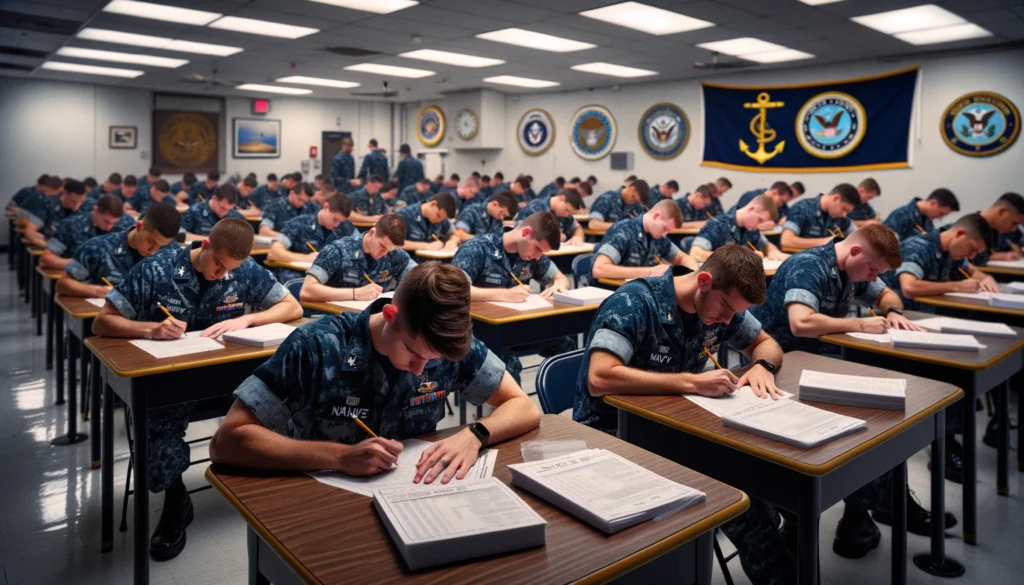
Moreover, A bachelor’s degree in your hands makes you eligible to become a Navy officer. Starting your journey with the aspiration to work as a navy pilot would get you to the next step: that is to sit for the Armed Services Vocational Aptitude Battery (ASVAB) and Aviation Selection Test Battery (ASTB).
- What is the ASVAB?
The Armed Services Vocational Aptitude Battery (ASVAB) is an aptitude test with multiple components that assess your suitability for the military and Air Force. It is the initial step of your illustrious career that you had always aspired to be a front-line fighter or a person behind the scenes.
ASVAB test includes the nine sections:
- General Science: A type of exam that tests your biological and physical sciences knowledge.
- Arithmetic Reasoning: The fundamental skill of this test is to perform simple mathematical operations.
- Word Knowledge: Alongside this, it determines your acquaintance with the understanding of words.
- Paragraph Comprehension: This test also determines how proficient you are in reading.
- Mathematics Knowledge: This test helps you to evaluate your math concepts and their applications.
- Electronics Information: Points out your understanding of electrical equipment and operations.
- Auto and Shop Information: This test assesses your knowledge of car maintenance and repair skills and shop operations in wood and metal.
- Mechanical Comprehension: Assess your understanding of mechanics and physical principles.
- Assembling Objects: Furthermore, This section challenges individuals to determine how various pieces fit together, simulating real-world scenarios critical in many military technical tasks. Moreover, It’s designed to assess a candidate’s aptitude for mechanical and technical roles, where understanding the relationship between components is essential for success.
ASVAB Test Format:
You will going to have two formats of the ASVAB test:
- Handwritten Test: This is the traditional test format, in which a paper is given to you, and you have to put the correct answers in a limited time.
In this table, you will get details about the format of the Handwritten ASVAB Test:
| Section | No. of Questions | Time Given (minutes) |
| General Science | 45 | 20 |
| Arithmetic Reasoning | 30 | 36 |
| Word Knowledge | 35 | 11 |
| Paragraph Comprehension | 15 | 13 |
| Mathematics Knowledge | 25 | 24 |
| Electronics Information | 20 | 9 |
| Automotive and Shop Information | 25 | 11 |
| Mechanical Comprehension | 25 | 19 |
| Assembling Objects | 25 | 15 |
- Computerized-Adaptive Testing (CAT-ASVAB):
Moreover, on the computer version, the difficulty of the questions gradually increases or decreases based on the nature of your answers.
In this table, you will get details about the format of the computerized ASVAB Test:
| Section | No. of Questions | Time Given (minutes) |
| General Science | 45 | 20 |
| Arithmetic Reasoning | 30 | 36 |
| Word Knowledge | 35 | 11 |
| Paragraph Comprehension | 15 | 13 |
| Mathematics Knowledge | 25 | 24 |
| Electronics Information | 20 | 9 |
| Automotive and Shop Information | 25 | 11 |
| Mechanical Comprehension | 25 | 19 |
| Assembling Objects | 25 | 15 |
These tests will take 3 Hours, and a Passing Score of ≥50 is required.
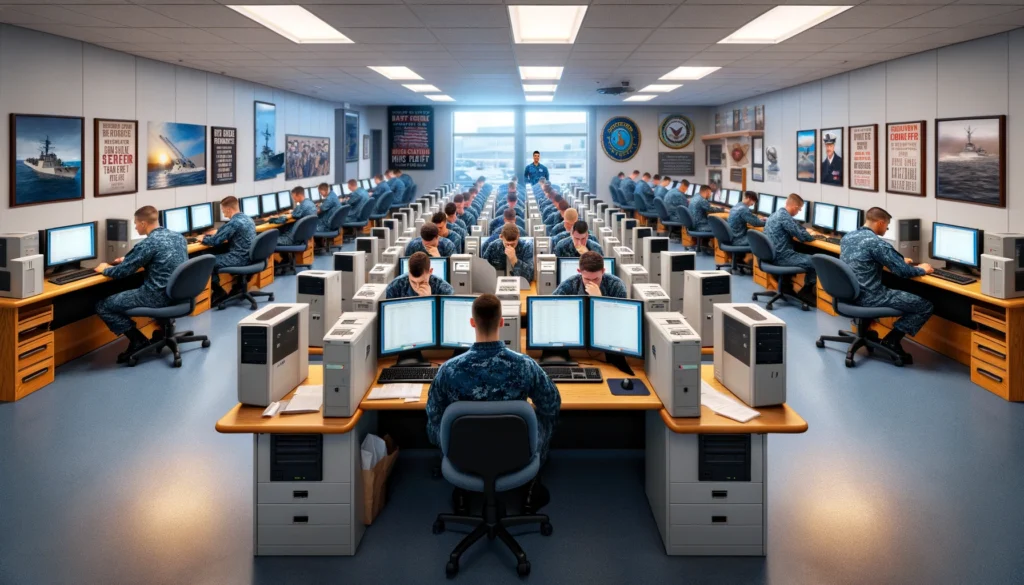
2. Enlistment Options:
Besides, How do I become a pilot in the Navy through different channels? Whether through the NROTC or by transitioning from enlistment via programs like Seaman to Admiral-21.
The Seaman to Admiral-21 program offers a path from enlisted ranks to the status of a Navy officer and subsequently into the flight training track. Furthermore, the second option is heading straight to Officer Candidate School (OCS) post-college, making your dream valid and viable.
3. Officer Candidate School (OCS) or Naval Academy:
The crucible of leadership and how hard it is to become a Navy pilot starts to unfold when you join Officer Candidate School or United States Naval Academy.
Besides, the question “How hard is it to become a Navy pilot?” & “How to become a Navy fighter pilot” will be apparent through rigorous training at OCS or the Naval Academy, intended to sharpen leadership skills and prepare officers for the multifaceted challenges they will face.
4. Aviation Preflight Indoctrination (API):
Furthermore, from here, your understanding of the skies begins. The API phase encompasses academic and physical training, laying the theoretical groundwork alongside swimming and aviation survival tactics. Therefore, API is the initial training phase of education for those aspiring to become a naval Pilot, marine pilot, or Coast Guard aviator in the U.S. Navy, Marine Corps, and Coast Guard. The 6-week continuous course is conducted at the Naval Air Station Pensacola.
This enables the establishment of a basic competence expected of all aviators. The API includes the main subjects directly related to aerodynamics, navigation, meteorology, and air rules; therefore, the candidates who want to fly are provided with the ultimate knowledge. It is an initial phase to prepare a military pilot or flight officer for advanced flight training by giving them competence, self-affirmation, and understanding.
Additionally, Learn About VSI & IVSI know.
5. Primary Flight Training:
After completing the API, you will feel the exhilarating first taste of flying; here’s where to explore the skies. Primary Flight Training puts officer candidates behind the controls, teaching the fundamentals of flight in trainer aircraft, a significant milestone on how to become a jet pilot in the Navy.
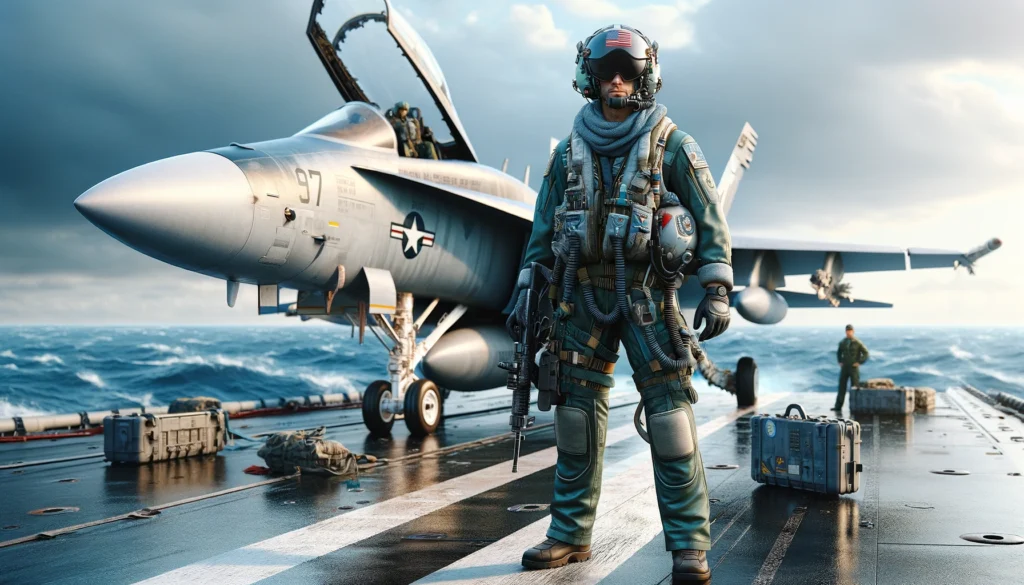
It is the stage where the theoretical knowledge acquired during the API is implemented, and students begin to master the art of flying.
Aircraft You’ll Fly during primary flight training:
- T-6 Texan II: Besides, The first in the series will be a single-engine turboprop designed to prepare the students in flight fundamentals.
- T-45 Goshawk: Furthermore, An advanced trainer aircraft designed for aircrew members learning to fly supersonic jets.
6. Advanced Flight Training:
Finally, Here’s where the question, “How to become a Navy fighter jet pilot?” or “How to become a Navy helicopter pilot” starts taking shape. Aspiring pilots, escalating from basic training to specialized training, aspiring pilots are separated into distinct aviation communities, such as the path to becoming a Navy fighter pilot or a Navy helicopter pilot.
Types of Aircraft Used in Advanced Flight Training:
| Aircraft Type | Examples | Focus |
| Jets | T-45 Goshawk, F/A-18 Hornet | High-speed flight, carrier operations, combat maneuvers |
| Helicopters | TH-57 Sea Ranger, MH-60 Seahawk | Control, precision, and adaptability in various missions, SAR operations |
| Turboprop Aircraft | T-44 Pegasus, T-6 Texan II | Multi-engine handling, navigation, long-duration missions |
| Multi-role Aircraft | E-2 Hawkeye, C-130 Hercules (for introduction) | Advanced surveillance, transport, carrier onboard delivery |
Specializing as a Navy Fighter Pilot:
If your heart is set on the fast-paced life of a fighter, prepare for additional, intense instruction that answers precisely how to become a Navy fighter jet pilot. This specialized route entails mastering advanced combat and weapons systems while sharpening unparalleled aeronautical skills.
When a pilot gets his “Wings of Gold”, he enters the day-to-day military exercises with the latest technology. They must understand the functioning of sophisticated fighting machines such as F/A-18 Super Hornets and the stealthy ones, like Lockheed Martin F-35 Lightning II. The ability to master these aircraft depends on the pilot’s ability to understand their complex systems, which comprise weapon systems and electronic warfare capabilities, meaning they are adaptable forces of the skies.
Moreover, the sortie phase witnesses these pilots carrying through many missions, from dog fights to ground attacks and surveillance, which are usually time-pressing in regional conflicts. Such practice adds high value to ensure their skills are up to mark and they are always prepared for any situation.
Besides this, Lifelong professional learning is crucial for the field of this discipline—pilots of N.F. Aircraft pursue sophisticated combat exercises, learn new fighting strategies, and keep abreast of the latest technological developments. Leadership is essential as the next level of their career path, and experienced pilots guide novices and participate in the military’s strategic planning.
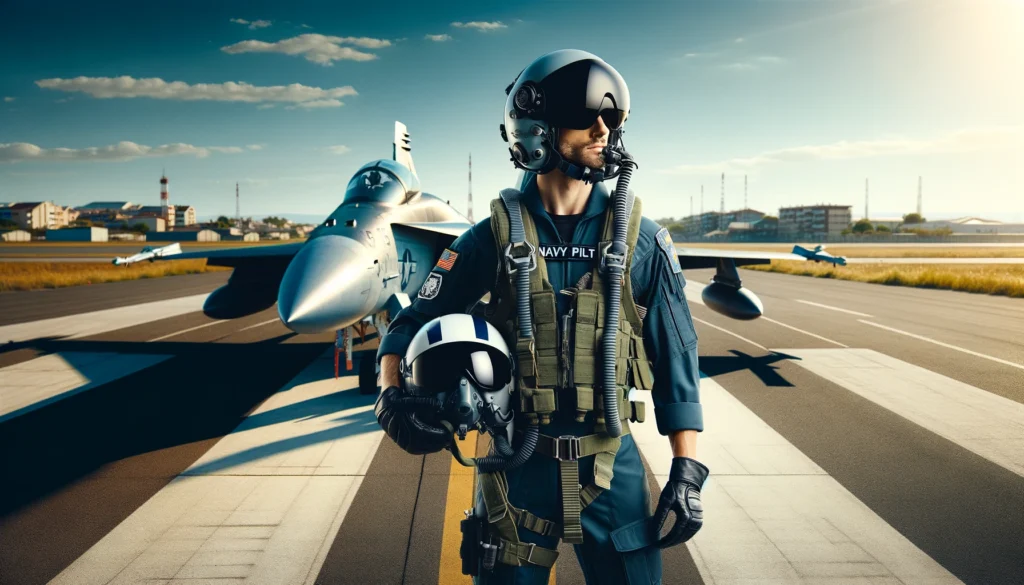
Time Duration and Challenges to Become a Navy Pilot:
- Time Required to Become a Navy Pilot:
Now, there’s still a question in your mind, “How long does it take to become a Navy pilot?” Additionally, It takes approximately two years from initial OCS or USNA entry to earning your wings, depending on the streamlining and your successful progress through each phase.
- Complexity of Training and Selection Process:
Additionally, Prospective pilots must understand how hard it is to become a Navy fighter pilot. The selection process is stringent; few aviators can maneuver a fighter jet at Mach speeds or touch down on an aircraft carrier deck amidst daunting seas.
- Physical and Mental Challenges
It involves arduous physical tests and strict academic screening. Meticulous hand-eye coordination, peak physical navigation through intensive training modules, and psychological endurance define the grit of a Navy pilot.
Advice and Tips for Success:
Furthermore, Those seeking advice on becoming a Navy test pilot or how hard it is to become a Navy fighter pilot should go through intensive study resources, regular physical training, and cultivate relationships with mentors who can illuminate the pathway with their seasoned insights.
Realistic Expectations:
Enthusiasts might come across a discussion “to become a Navy pilot or a Navy fighter pilot “, idealizing the thrilling aspect of the job. However, absolute commitment involves long duty hours, life-or-death decisions, and a long distance from friends, family, and relatives, making our decision-making hard.
Still, the fact is every human can achieve whatever he wants, depending on your motivation for it. Millions of Navy pilots survived the U.S. Navy till today, and all of them have fulfilled their dreams; now it is your turn to touch the sky & serve U.S. Air boundaries. Moreover, Submit your application now & start your journey to the skies.

